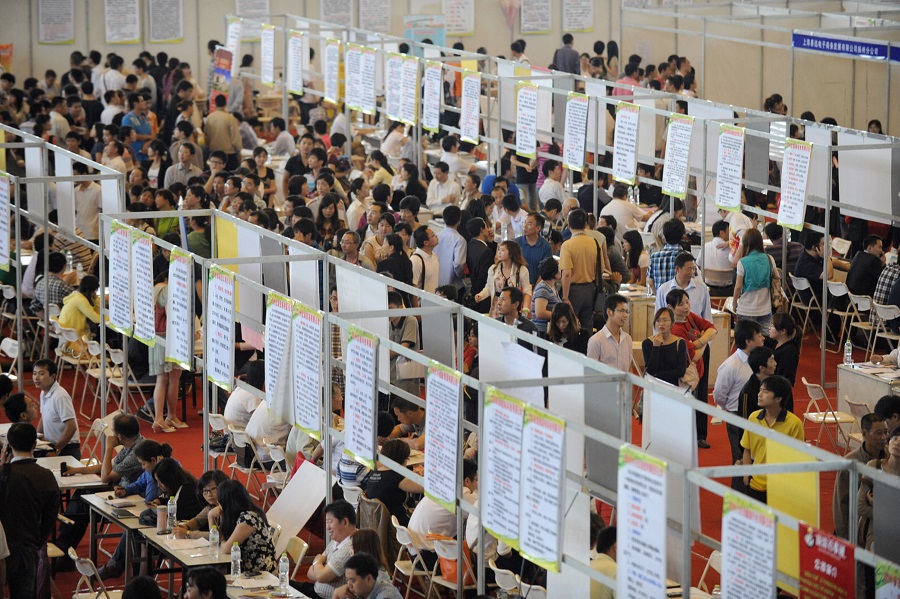Employment: A New Priority Target for China’s Macro-Control Policies

The government work report recently delivered at the second session of the 13th National People’s Congress, China’s national legislature, declared that in 2019, for the first time, China is elevating the employment-first policy to the status of a macro policy. This is to increase society-wide attention to employment and enhance support for it.
Since the beginning of China’s historic reform and opening up in 1978, the country’s employment scale has continued to expand and the unemployment rate has remained low. By the end of 2018, the total number of employed people in China reached nearly 776 million, a rise of 370 million people compared with that in 1978, bringing about an increase of more than 90 percent. However, at the same time, as the country with the largest population and labor force in the world, China is under visible employment pressure.
One reason for placing employment at such an important position in this year’s government work report lies in China’s current severe employment situation. However, there is another key reason: faced with mounting pressure of the economic downturn, it is increasingly difficult for China to maintain the previous high-speed economic growth rate. The priority of economic growth in China’s macro-control policies may change. Elevating the employment-first policy to the status of a macro policy indicates that the focus of China’s macroeconomic regulation and control policies is changing toward employment.
The current employment situation in China is closely related to the transformation of the country’s labor market.
On the one hand, supply of China’s labor force has witnessed a steady decline in recent years. According to statistics from Wind, a Chinese financial data and information service provider, by the end of 2018, China’s working population aged from 16 to 59 accounts for more than 64 percent of its total population, a decline of 1.6 percentage points from that of the previous year. It continued the downward trend since 2012. By the end of 2018, nearly 776 million people were employed nationwide, a decrease of 540,000 people compared with that of 2017. This is the first decrease since the country launched its reform and opening up in 1978. The drop in employed population is largely due to the decline in China’s labor force, indicating that the country’s labor costs will continue to rise rapidly in the future.
On the other hand, the service sector’s capability to create more jobs has been enhanced, while that of the secondary industry has declined. Since 2012, the proportion of people employed by China’s service sector in the country’s whole working population has been rising. At the same time, the figure for secondary industry has seen a decline. Considering the slowdown in population growth, the gradually aging society, and a drop in the future labor force, labor shortage may be the main problem that China needs to address in the years to come.
One phenomenon calls for special attention. In recent years, technological advances and the progress of artificial intelligence bringing workflow automation has increasingly made an impact on employment in China. Although technological advances will bring temporary structural unemployment, the history of human society shows that employment grows in step with technological progress.
With the ever-expanding social production scale, the increasing number of industrial categories, the upgrading of the structure of consumption, and the continuing improvement of human capital, automation trends brought by technological advancement and the progress of artificial intelligence will create more jobs for China in the future.
Under the current macroeconomic situation, China can start from the following aspects to increase employment. First, the government should continue to cut taxes and administrative fees for enterprises. Ensuring the smooth operation of enterprises in a way guarantees employment. Second, China’s industrial structure should be further optimized to match the country’s current employment structure, thus avoiding structural unemployment. Third, stabilizing the economy is the foundation for stabilizing employment. Stabilizing expectations is a precondition for stabilizing the economy. Thus, stabilizing expectations should be more highly prioritized. Fourth, unemployment benefits and relief should be implemented to ensure social stability.
The author is a professor with the School of Economics, Peking University.